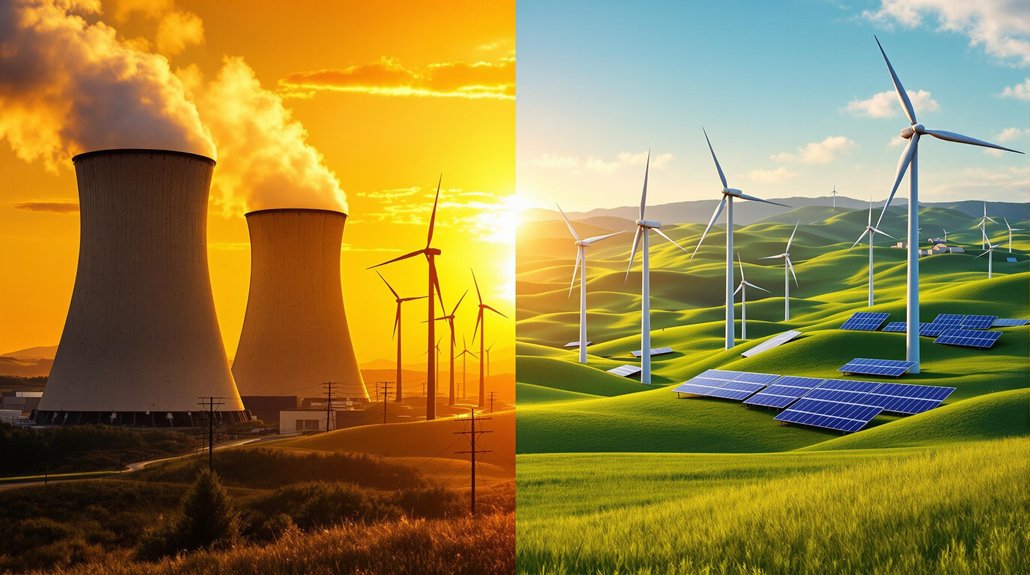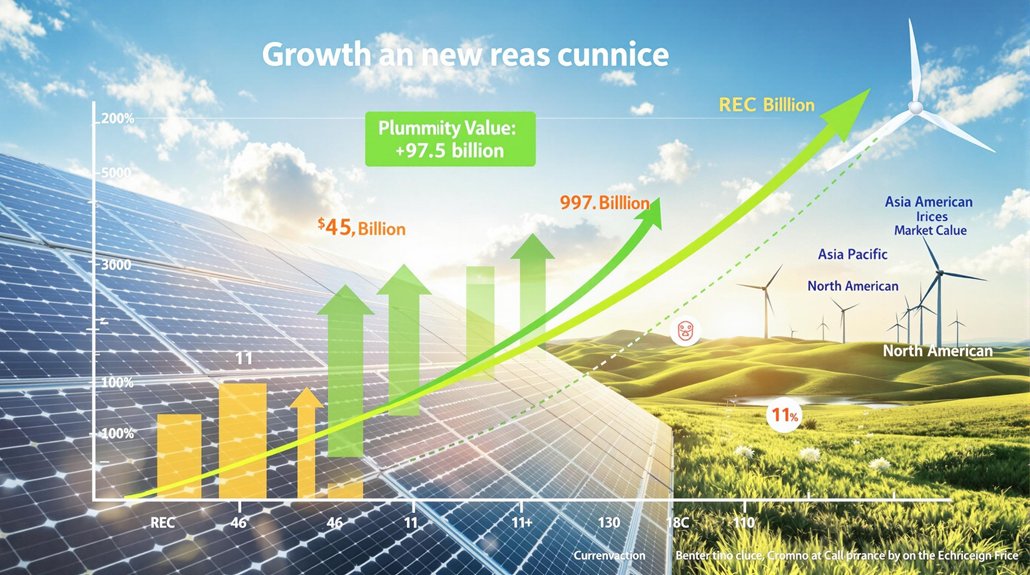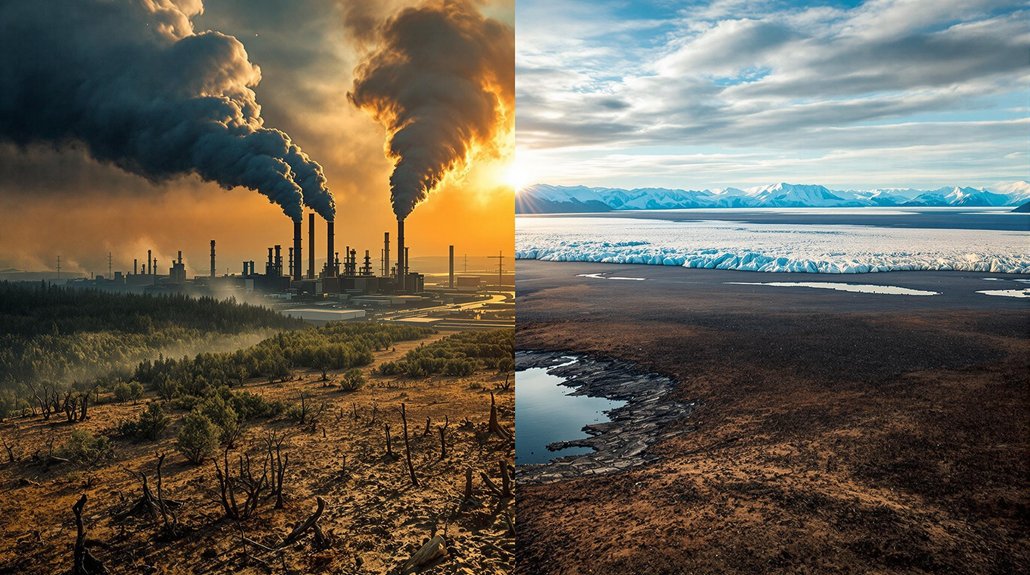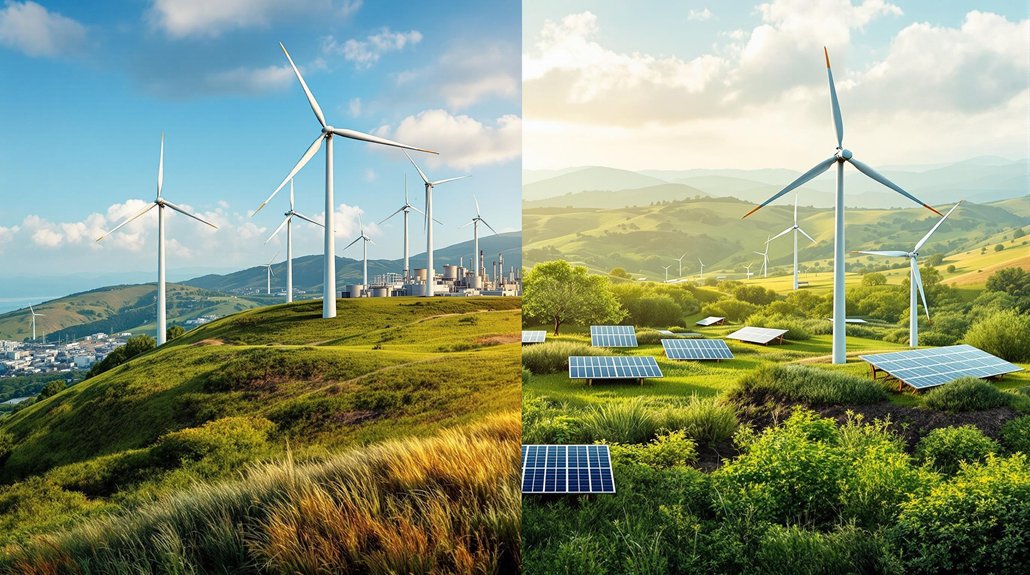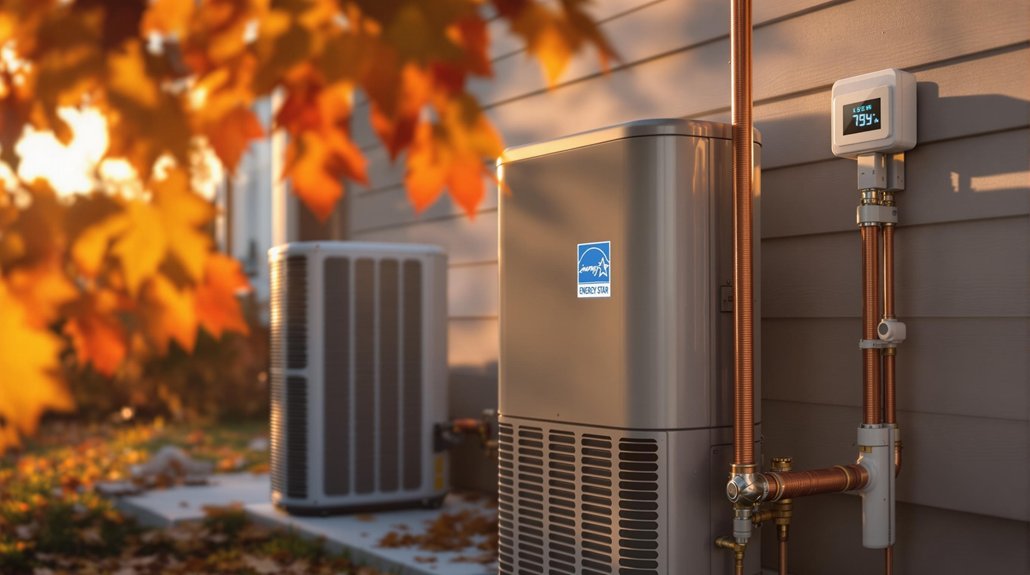Alternative energy includes any non-fossil fuel source, while renewable energy specifically refers to sources that naturally replenish themselves. All renewable energy is alternative, but not vice versa. Nuclear power and hydrogen fuel cells are alternative but not renewable. Solar, wind, and hydropower are both alternative and renewable. Both aim to reduce fossil fuel dependence, but renewables offer more environmental sustainability. Additional distinctions emerge when comparing their reliability and economic impacts.
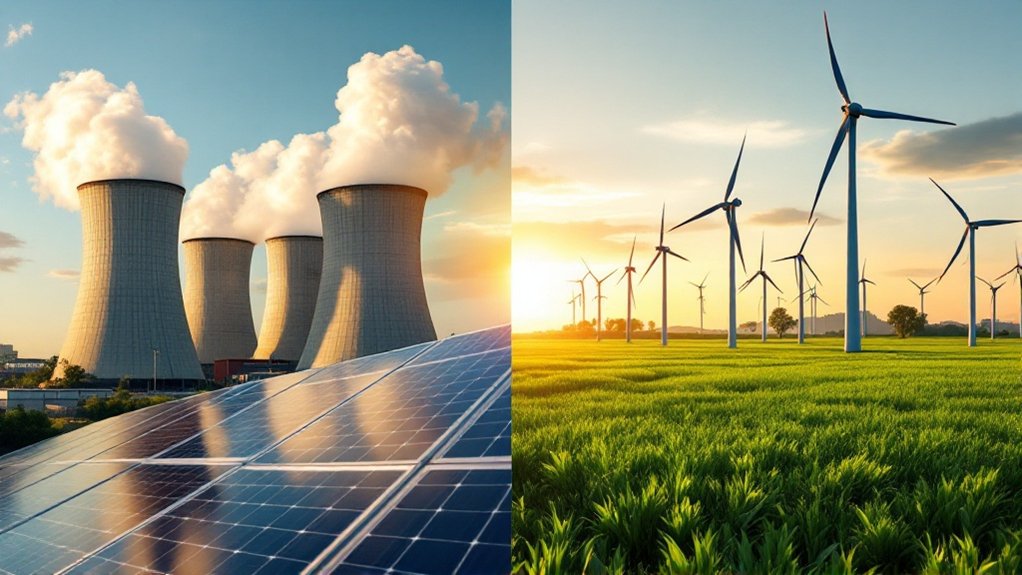
While many people use the terms “alternative energy” and “renewable energy” interchangeably, they’re actually different concepts with important distinctions. Alternative energy refers to any energy source that isn’t a fossil fuel, while renewable energy comes from natural sources that replenish themselves. This means renewable energy is actually a subset of alternative energy, though both aim to reduce our dependence on fossil fuels.
The key difference is that alternative energy can include finite resources, while renewable energy sources are infinite. For example, nuclear power is an alternative energy source, but it’s not renewable because it uses uranium, which will eventually run out. Renewable sources like solar, wind, and hydropower won’t run out because they’re constantly replenished by nature.
Not all alternative energy is renewable—nuclear uses finite uranium, while solar and wind are replenished continuously by nature.
Alternative energy sources include nuclear power, hydrogen fuel cells, natural gas, liquid petroleum gas, and some forms of biomass. Oil is notably excluded from alternative energy classifications due to its high carbon emissions. Renewable energy sources consist of solar power, wind energy, hydroelectric power, geothermal energy, and tidal power. Technological advancements have made renewable sources increasingly more efficient and cost-effective in recent years. The distinction matters because not all alternative energy sources are equally environmentally friendly.
When it comes to environmental impact, renewable sources generally have a lower footprint. They produce little to no greenhouse gases during operation. Some alternative sources, though cleaner than coal or oil, may still produce emissions or create other environmental concerns. Nuclear power, for instance, produces no carbon emissions but creates radioactive waste.
Both energy types face challenges with availability and reliability. Wind and solar power depend on weather conditions, while nuclear and natural gas provide consistent power. Many renewable sources require energy storage solutions to overcome their intermittent nature. Alternative energy adoption promotes energy autonomy for regions by reducing dependence on imported fossil fuels.
The economics of both energy types continue to evolve. Initial setup costs can be high, but operating costs for renewables are often lower long-term. Government incentives support both industries, and both create new jobs. As technology improves, renewable energy is becoming more competitive with traditional fossil fuels.
Frequently Asked Questions
How Do Costs of Renewable Energy Compare to Fossil Fuels?
Renewable energy costs have fallen dramatically over the past decade.
Solar costs dropped 85% and wind 56% between 2010-2020.
Now, renewables are often cheaper than fossil fuels, with solar and wind costing $0.03-$0.04 per kWh compared to coal’s $0.05-$0.15.
Most new renewable capacity added in 2020 was cheaper than the least expensive fossil fuel option.
Future projections show renewables becoming even more affordable.
Can Alternative Energy Sources Work During Extreme Weather Conditions?
Alternative energy sources can work during extreme weather, but with limitations.
Solar panels produce less power on cloudy days and in high temperatures.
Wind turbines shut down in very high winds but perform well in cold weather.
Hydropower struggles during droughts but remains reliable in most conditions.
Energy storage systems like batteries help maintain power during outages.
Using multiple energy sources creates a more weather-resistant power system.
Which Countries Lead in Renewable Energy Adoption?
China leads the world in installed renewable energy capacity with 1,453 GW, followed by the United States with 388 GW.
However, Norway tops the list for highest renewable electricity share at 98.3%. Brazil ranks third in capacity and second in share at 89.3%.
Denmark leads European performance indexes.
Emerging markets making significant progress include Costa Rica, Uruguay, and Morocco.
How Do Energy Storage Solutions Affect Renewable Implementation?
Energy storage solutions enable wider adoption of renewable energy sources like solar and wind. They store excess energy for use when the sun isn’t shining or wind isn’t blowing.
These systems improve grid stability, reduce the need for fossil fuel backup plants, and decrease renewable energy waste.
Battery storage, pumped hydro, and compressed air are common technologies. Costs are falling rapidly, making storage increasingly affordable for renewable integration.
What Careers Are Emerging in the Alternative Energy Sector?
The alternative energy sector is creating numerous job opportunities.
Solar photovoltaic installers and wind turbine technicians lead with over 50% projected growth through 2029.
Other emerging careers include energy storage engineers, smart grid technicians, and microgrid specialists.
The field also needs sustainability consultants, environmental policy analysts, and project finance specialists.
These diverse roles require varying skills from technical expertise to business knowledge.
